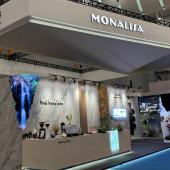Ceramic machinery and glaze and colour sectors see growth in average profitability
Following the excellent reception of the first edition published last year, the "Financial statement analysis of world manufacturers of machinery for the ceramic and brick industries and glaze and colour producers" produced by the Acimac Research Department has now been released in a second edition.
Published as part of the "Financial Statement Analysis" series, the study examines the economic and financial data for the three-year period 2011-2013 of 199 manufacturers of tile, sanitaryware, tableware and heavy clay machinery (139 from Italy and 31 from the rest of the world, including Spain, France, UK, Portugal, Germany, China, Japan, Belgium, Czech Republic, Luxemburg), as well as 22 Italian and 17 non-Italian (including 15 Spanish) manufacturers of colours and glazes for the ceramic industry.
Ceramic machinery
The analysis for the ceramic machinery industry reveals that the Italian companies continued their process of recovery in 2013. The main profitability index (ROI, return on investment) shows an average profitability of 4.0%, higher than the average figure for the three-year period 2011-2013 and in line with the average ROI of other producer countries.
Substantial investments in capital-intensive equipment and manufacturing technologies along with a process of corporate reorganisation aimed at optimising the use of labour has enabled Italian companies in the sector to improve EBITDA compared to 2012 in spite of very high labour costs per employee and rising ULCs (unit labour costs). In other words, the increase in productivity per employee achieved through investments more than offsets the rise in labour costs. However, just like other Italian capital goods manufacturing sectors, the financial and equity structure is much less satisfactory. Undercapitalisation and debt (especially short-term debt) make business activities more risky due to greater financial vulnerability.
In other countries, ceramic machinery manufacturing companies have a more balanced financial and equity structure and a higher average productivity compared to their Italian counterparts, offset however by higher labour costs as a percentage of turnover than that of Italy due to a more labour-intensive production process. More specifically, they achieve greater efficiency in terms of costs of raw materials, semi-finished products, services and stock management but lower efficiency in human resource management (downstream of added value). On average over the three-year period 2011-13, the ULC of non-Italian companies stood at 25.9% of turnover compared to the 21.8% of Italian companies.
A number of interesting findings emerge from the clustering and benchmarking analyses, which compare companies with others that are most similar to them and analyse the characteristics of the companies with the highest levels of performance. The 13 highest performing companies in the sector, most of which are Italian, have an average return on invested capital that is four times higher (ROI 16.9%) than the overall average. ULC is more than 10 percentage points lower than the sector average, while the equity and financial structure is balanced and therefore stable and at low risk.
The glaze and colour producers
The Italian ceramic glaze and colour producers likewise showed improvements in productivity per employee and growth in profitability in 2013 compared to 2012. The interest coverage ratio also increased, at least partially offsetting the risk of financial instability due to insufficient capitalisation. Although lower than in 2011, average leverage in 2013 (4.48%) was well above the threshold of concern.
As for the glaze and colour producers in other countries (mainly Spain), the study reveals a greater production efficiency than is observed in Italy. Although the cost of employees/turnover is not much lower than that of Italian companies, non-Italian glaze and colour producers have an almost four percentage point higher EBITDA than their Italian counterparts. The analysis of the financial and equity structure reveals a lower incidence of short-term debt and greater average capitalisation compared to Italian companies.
| View technical page and table of contents of the study |
Did you find this article useful?
Join the CWW community to receive the most important news from the global ceramic industry every two weeks





















